
90+ Mind-blowing Sales Statistics and Insights to Drive Sales [2025]
Record, transcribe and summarize conversations with one click.
The saying, “Knowledge is power” is not just a cliché. You need to know better to sell better. And staying up-to-date on the latest sales trends will help you make informed business decisions, adopt data-driven strategies, and optimize your sales approach.
To this end, we have curated mind-blowing sales statistics and industry insights from well-researched reports and studies. Use the data to optimize your sales approach!
Sales prospecting statistics
Most reps will agree that sales prospecting is a vital but not easy task. A rep has to identify potential customers and establish contact with them by discussing in person, through calls, or via digital channels. The statistics below will give you some insights into future prospecting.
42% of salespeople consider prospecting the most challenging part of the sales process, compared to closing (36%) and qualifying (22%). (Hubspot)
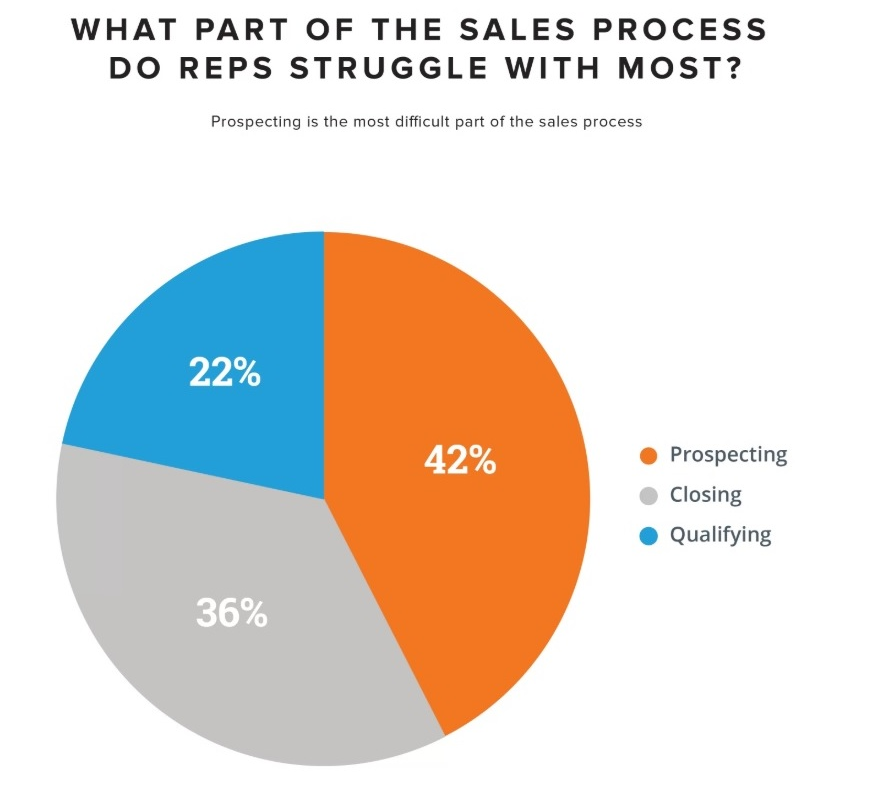
2. 71% of buyers want to hear from reps when the buyers are looking for ideas to drive stronger business results. (RAIN Group)
3. It takes an average of 8 touches to set up a meeting or other conversions with a new prospect. (Crunchbase)
4. Top salespeople spend an average of 5 hours per week on prospecting activities. (Crunchbase)
5. 89.9% of companies use two or more sources of contact data to meet their sales development needs. (Gartner)
6. 80% of prospects prefer talking to reps over email while 50% prefer talking over the phone.
7. 56% of sales professionals use social media to find new prospects.
8. The biggest factors in whether a prospect connects with a rep are:
need for their product or service - 75%
having a budget - 64%
the rep’s offer to provide something of value - 63%.
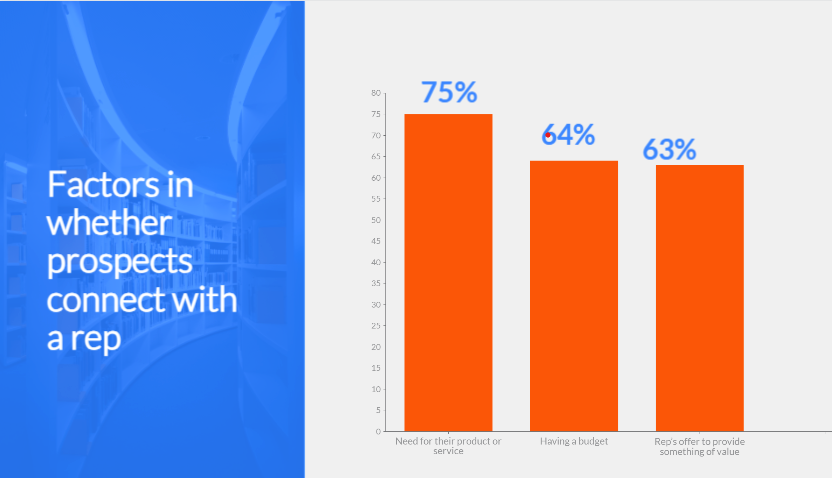
Sales cold calling statistics
Cold calling is a numbers game. The more you call, the better your chances of selling. But there is an art to cold calling - you need to know when best to call, the ideal reach-out times, and even the optimal length of your monologue!
The stats below are evidence that you shouldn’t give up on cold calls too quickly.
9. Organizations whose reps don’t cold call experience 42% less growth than those who employ cold calling. (Crunchbase)
10. 96% of buyers say they are most influenced by cold calls that show the value their products/services will offer them.
11. An average inside sales rep can make up to 33 cold calls a day.
12. Cold calling has a 2% success rate on average.
13. 82% of buyers who have answered a cold call reported accepting sales meetings. (RAIN Group)
14. 80% of cold calls are directed to voicemail, which has a callback rate of 4-6%. (Radicati Group)
15. Successful cold calls typically have a 55:45 talk-to-listen ratio. (VoiceSpin)
16. The ideal number of calls to win a sale when you are in conversation with a decision-maker is 6. (Crunchbase)
17. Friday afternoon is the worst time and day to make a call while Wednesday is the best day of the week to make a cold call. (Callhippo)
18. The best time to call prospects is between 4 & 5 PM and the second best is between 11:00 AM - 12:00 PM. (Callhippo)
19. Successful sales calls have a longer monologue on average. (Crunchbase)
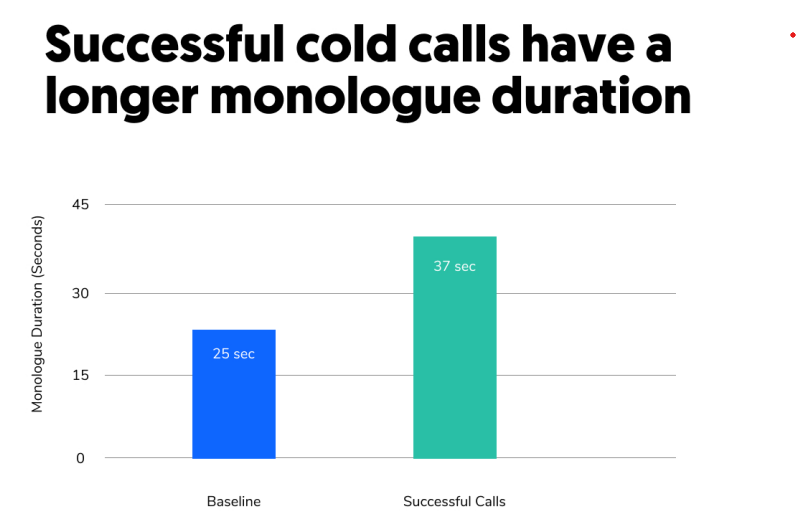
Inside and outside sales statistics
Inside sales refers to a salesperson selling remotely via the phone, email, or other digital channels. Outside sales is a more traditional face-to-face selling approach.
From the statistics below, you will find that inside sales are more efficient while outside sales are a big driver in hitting the sales quota.
20. 46% of fast-growing tech companies employ inside sales, while 21% use outside sales. (Zippia)
21. 65% of outside sales reps are meeting their quota, 10% higher than inside sales reps. (Spotio)
22. Acquiring new customers costs outside sales teams 40% to 90% more than it costs inside sales teams. (ZS Associates)
23. Inside calls cost an average of $50 while outside calls cost an average of $308. (Pointclear)
24. Outside sales reps have a 40% close rate on average, higher than inside sales. (Zety)
25. On average, outside sales professionals make 14% more than their inside sales counterparts.
26. The ideal ratio for inside sales to outside sales ranges from 1:1 to 10:1.
Get Notta AI to summarize meetings and next steps, schedule meetings, and put you in the best position to secure business.
Inbound sales statistics
More than ever before, companies are providing guidance through free consultation, content, and insights to prospective customers to help them make informed purchase decisions. And this, in turn, translates into sales for the companies - especially B2B as we can see below.
27. 47% of purchases view three to five pieces of a company’s content before speaking with a sales representative. (HubSpot)
28. 46% of marketing professionals say that inbound marketing has a higher ROI, while only 12% say that outbound does. (HubSpot)
29. Inbound marketing leads cost 61% less to generate than outbound leads. (HubSpot)
30. 64% of sales teams that use inbound social selling reach their quotas, compared to 49% who do not. (Aberdeen Group)
31. A whopping 93% of B2B purchase processes start with an online search and 94% of B2B buyers research online before finalizing a purchase.
32. 59% of marketing professionals say inbound marketing generates high-quality leads, compared to 16% who report that outbound marketing does. (HubSpot)
33. 98% of sales reps who have at least 5,000 LinkedIn contacts consistently reach or surpass their sales quotas.
34. 57% of the selling process is completed for buyers before a company has a chance to interact with them. (Drip)
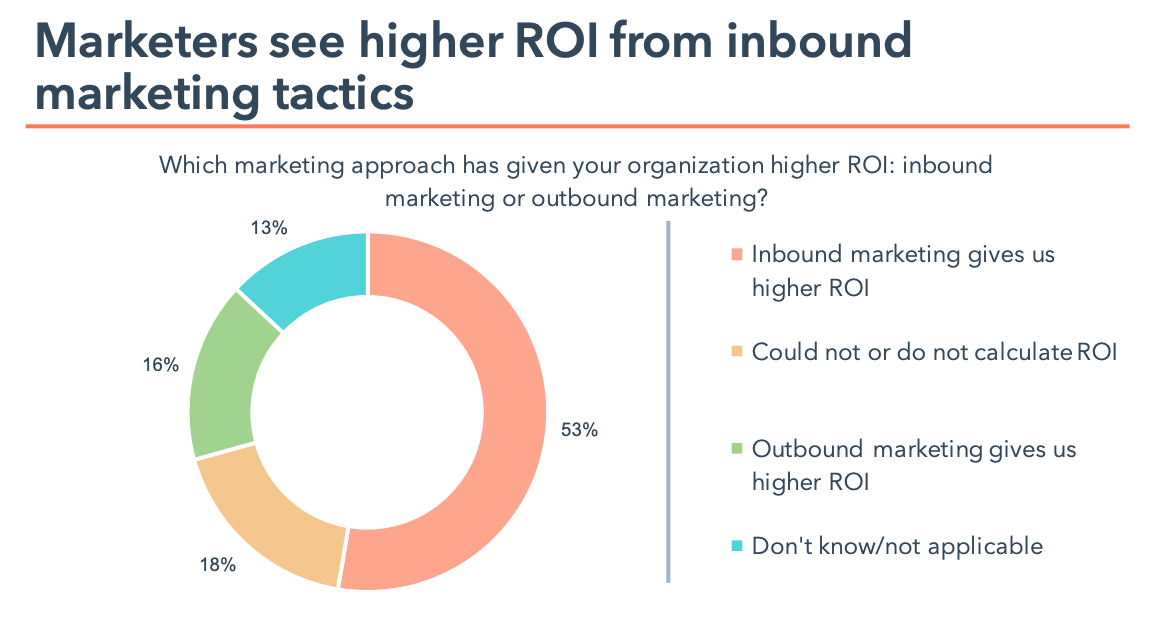
Sales marketing statistics
Sales marketing requires synergy between the sales and marketing teams to align on messaging, offering, and contact data and profiles.
Sales marketing also relies heavily on social media and emails to improve reach and effectiveness.
35. One in five sales professionals believe that sales and marketing teams aren’t very aligned, or not aligned at all.
36. The biggest barriers to sales and marketing alignment, according to sales leaders, are:
Lack of effective communication between the teams - 38%
Lack of alignment on goals or strategies - 30%
Lack of sales input on marketing content - 27%
Use of different tools by the teams - 26%
Difficulty in sharing data between the teams - 26%
37. 90% of top-performing sellers use social media as part of their sales strategy. (Crunchbase)
38. Video is effective. 87% of marketers believe that video marketing has helped them increase sales. (Linkedin)
39. Companies that use social media for sales marketing get 80.3% of their B2B buyers from LinkedIn, 12.7% from Twitter, and 6.7% from Facebook.
40. 75% of B2B buyers and 84% of C-level executives use social media to help them make a purchase decision. (Linkedin)
41. Personalized email subject lines increase response rates by 30.5%. (Backlinko)
42. Prospects sign up for email campaigns for four main reasons:
Special offers - 34%,
Discounts - 29%,
Learn more about a company’s products - 22%
Simply like the brand - 15%
43. Customers respond to only 8.5% of outreach emails. (Backlinko)
Sales follow-up statistics
The statistics on sales follow-up prove that persistence pays. Following up on sales calls, messages and emails greatly increase a rep’s chances of receiving a response from a prospect and closing deals.
44. Only 2% of sales happen during the first point of contact. The vast majority of sales require multiple follow-up contacts. (IRC Sales)
45. A single additional follow-up message can increase reply rates by 65.8%. (Backlinko)
46. Sales reps who follow up within 24 hours of their initial outreach get an average 25% response rate. (Yesware)
47. Email sequences with multiple attempts and multiple contacts increase response rates by 160%. (Backlinko)
48. 48% of salespersons never attempt follow-up calls. (Saleslion)
49. Salespeople only follow up 2-3 times on average before quitting. (HubSpot)
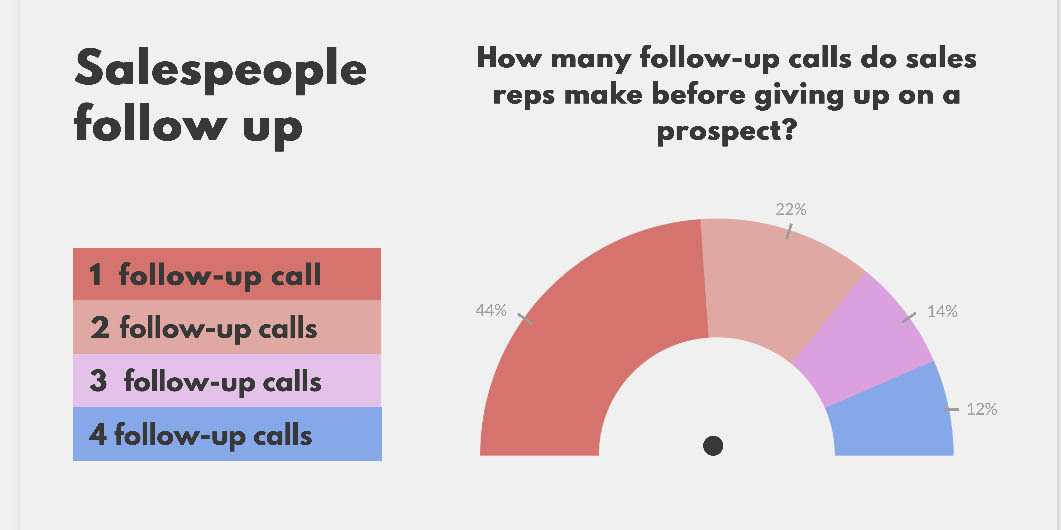
50. 80% of sales require at least five follow-up calls to be successful. (Linkedin)
51. 66% of buyers who feel that a rep highlighted solutions to their business problems schedule a follow-up.
B2B selling statistics
B2B sales have undergone a rapid transition due to the COVID-19 pandemic and the increased adoption of remote communication. Data from studies have shown shifts in the behavior and mindset of buyers and sellers in B2B sales.
This change has opened up new opportunities and success metrics in digital sales.

52. 77% of B2B decision-makers now prefer speaking to vendors via video conference over speaking on the phone. (Saleslion)
53. 70-80% of B2B buyers prefer remote human interactions and digital service to in-person interactions. (McKinsey)
54. The average B2B sales cycle length is 3-6 months. Complex B2B solutions take a longer time.
55. The most potent lead nurturing activities for B2B organizations are:
sales emails - 50%
sales calls - 49%
videos - 45%
email newsletters - 44%
reviews & case studies - 40%
56. The most effective lead nurturing strategies for B2B teams involve
social media - 46%
enhanced personalization - 35%
content engagement data - 33%
event marketing - 31%
57. The most effective B2B sales strategies for selling to existing customers are:
offering discounts - 64%
understanding key customer challenges - 60%
providing thoughtful suggestions - 58%
58. 61% of B2B marketers send all leads directly to sales, but only 27% of the leads are qualified. (MarketingSherpa)
Sales referral statistics
Referrals are an inexpensive way to get high-quality leads because they come from satisfied customers whose opinions are perceived to be unbiased by prospective customers.
59. 57.9% of reps say that they ask for fewer than one referral per month, 40.4% report rarely ask, and only 18.6% ask every person they are in front of. (Sales Insights Lab)
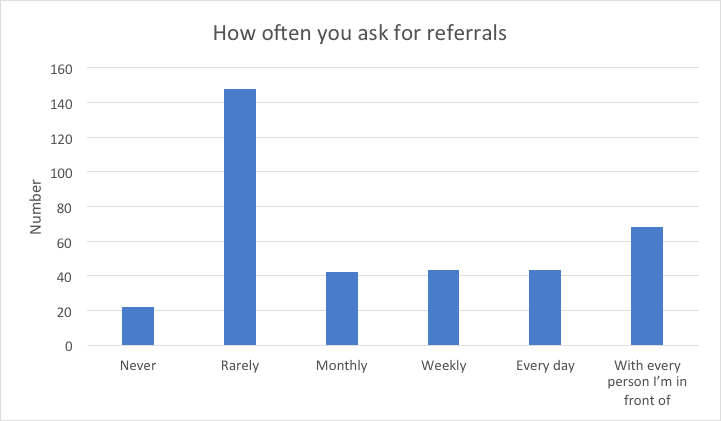
60. 83% of the customers are open to referring a business after a successful purchase. (Thinkimpact.com)
61. Customers acquired through referrals have a 37% higher retention rate and are four times more likely to make a purchase.
62. 92% of customers are willing to trust companies when referrals come from people they know. (Nielsen)
63. 65% of a B2B company’s new sales are from referrals. (Thinkimpact.com)
64. 78% of the B2B referrals create viable customer leads for the business.
Sales technology and AI statistics
The role of technology and AI in sales has deepened in recent years. Today, almost every part of the sales process can be optimized or automated by it. The result? Teams that have employed tech and AI tools have reported higher productivity, stronger customer relationships, and improved sales.
A great example of how teams are leveraging technology is by using Notta AI notetaker to manage sales calls and client meetings and automate note-taking. This way, reps can focus on building and strengthening their client connections.
65. More than 30% of sales-related activities can be automated with today’s technology. (McKinsey)
66. 54% of sales professionals believe sales technology is a great resource for building stronger relationships with buyers. (Zendesk)
67. 77% of salespeople say their company intends to invest more in sales intelligence tools. (Linkedin)
68. Gartner predicts that by 2025, 75% of B2B companies will employ AI to elevate traditional sales books.
69. 61% of sales high-performers use a CRM tool to automate parts of their sales process. (HubSpot)
70. 54% of sales reps say digital sales tools help them win over more prospects. (Zendesk)
71. 2 out of 3 organizations that use dedicated sales analytics tools said they have improved the results of their sales activities and processes significantly (20%) or slightly (47%).
72. High-performing sales professionals are more than 2x as likely to use AI to guide their selling. (Salesforce)
73. 70% of sales professionals say using AI helps them save more time.

74. Customer service teams who used an AI-based conversational assistant increased the number of issues they resolved per hour by 14%.
75. Companies can save up to $89.07 billion per year if sales professionals use AI to complete data entry and non-sales-related tasks.
76. Businesses that used AI in their sales process reported a 50% increase in sales leads.
With Notta, you can easily generate meeting minutes, turning spoken content into written records with 98.86% accuracy.
Sales management statistics
A company’s sales management oversees every part of its sales from strategy, training, and sales planning to execution and evaluation of its process and results. Therefore, a huge part of the company’s success or failure is hinged on the effectiveness of its management.
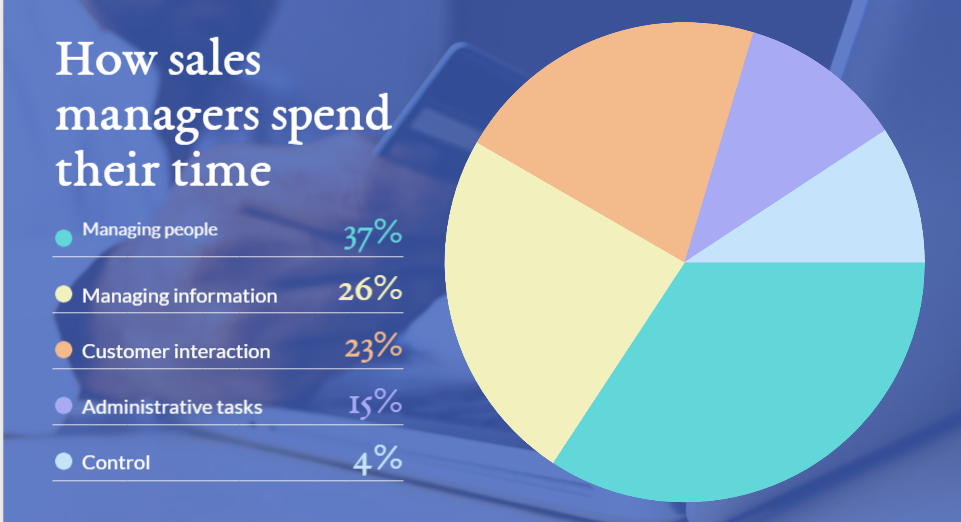
77. Sales managers spend:
32% of their time managing people.
26% of their time managing information.
23% of their time on customer interaction.
15% of their time on administrative tasks.
4% of their time is spent on control (eating lunch, etc.).
78. Poor sales management can cost a company up to $3.5 million annually.
79. In addition to overseeing their teams, 74% of sales managers handle their own sales accounts.
80. 72% of sales leaders recognize that they need to upskill their sales teams.
81. 96% of sales leaders agree that effective sales coaching positively impacts their salespeople’s performance.
82. 38% of sales managers have selling skills as the number one area of focus when coaching their reps.
83. 65% of reps believe the training quality and learning opportunities their company offers positively influence their engagement.
84. Investing in training salespeople has a 353% ROI.
Sales productivity statistics
The main emphases in sales productivity are effectiveness and efficiency - optimizing sales tasks and processes and completing them in good time. With this broad scope, there are possible indicators to pay attention to as we will see in the stats below.
85. 41.1% of sales professionals say they consider their phones their most productive sales tool.
86. 81% of companies believe that productivity would improve with better processes, skills, or competency training.
87. Top-performing sales representatives “pitch” their offer only 7% of the time.
88. Top-performing sales reps only talk about product features 9% of the time in discovery calls and 19% of the time in presentations while other reps talk about the product 18% of the time in discovery calls and 31% of the time in presentations.
89. The discovery calls of top-performing reps are 76% longer than that of the average salesperson. Their presentation calls are also 55% longer.
90. 81% of sales and marketing teams do not review and correct their sales processes.
91. The average new hire is fully productive in 5.3 months, 24% are ready in 1–3 months, and 16% take longer than seven months
Conclusion
Now that you are up to date on the most important statistics and insights in the sales industry, you can identify pitfalls in your current sales approach and make the necessary changes.
You can also check out the following reports to get some more insight into running successful remote teams and managing productive meetings:
Sources
Adage. Social Media Increasingly Important for B-to-B Marketers
Crunchbase. The Essential Guide to Cold Calling
Demand Gen. 2022 Lead Nurturing & Acceleration Benchmark Survey Report
Forbes. 78% of Salespeople Using Social Media Outsell their Peers
Gartner. Sales Development Technology: The Stack Emerges
Get VOIP. Is cold calling still effective?
Hubspot. 2023 Sales Trends Report
Hubspot. 85 Key Sales Statistics That'll Help You Sell Smarter in 2023
Zendesk. 73 important sales statistics for 2023
Level Eleven. 14 Sales Management Statistics Every CFO Should Know
LinkedIn. The State of Sales Report
Marketingprofs. The Purchasing Behavior of B2B Buyers
McKinsey. These eight charts show how COVID-19 has changed B2B sales forever
Ringover. AI in Sales Marketing: 2023 Statistics and Analysis
Sales Insights Lab. 23 Surprising New Sales Statistics for 2023 from Our Groundbreaking Studies